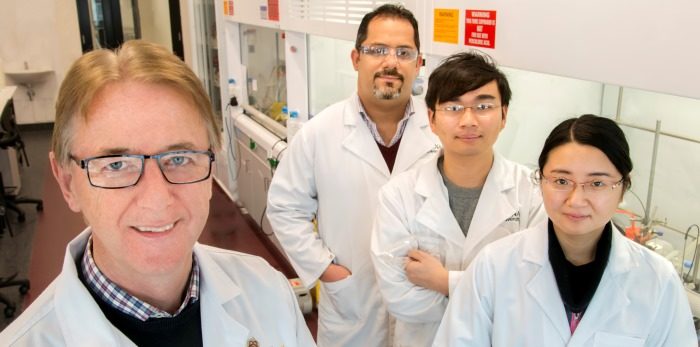News
3D printing bone tissue
Jun 28 2022
ACES researchers have refined a way to make ammonia—a popular fertilizer that relies on huge amounts of coal-fired energy to make—using energy from the sun.

Chief Investigator Prof Doug MacFarlane said the new process could reduce carbon global emissions by cutting the amount of fossil fuel required to make ammonia fertilizers.
“Ammonia production for fertilizers produces about two percent of global carbon production and this figure will only increase to keep up with rising global demand,” Doug said.
“Our sun-driven process produces ammonia fertilizers without the carbon footprint,” he said.
Harnessing photochemical conversion to convert nitrogen into ammonia via solar energy isn’t a new concept, but one that researchers enhanced using a new phenomenon called surface plasmon resonance to improve the light absorption by the semiconductor material.
In this case, black silicon—a high surface area, etched form of silicon—is used as the semiconductor material in a multi-layer structure.
“We demonstrated that production of ammonia is possible in a simple photo driven device that could produce fertilizers autonomously,” Doug said.
“Improved yields are the next step and will require improvement in the structure and the catalysis of the reduction reaction. Work in that direction is underway,” he said.
The development is great news for the environment, and it also ties in nicely with ACES’ goal of producing useful fuels and chemicals from solar energy.
This device does just that, from nothing more than water and nitrogen from the atmosphere.
“Other applications ACES is pursuing include using this as a means of generating ammonia in large quantities for use as a fuel,” Doug said.
The work is described in Nature.
Photo LR: Prof MacFarlane, Muataz Al-Agele (back), Kun Chen and Dr Fengling Zhou (front) refined a clean process to make a popular fertilizer and generate energy.













